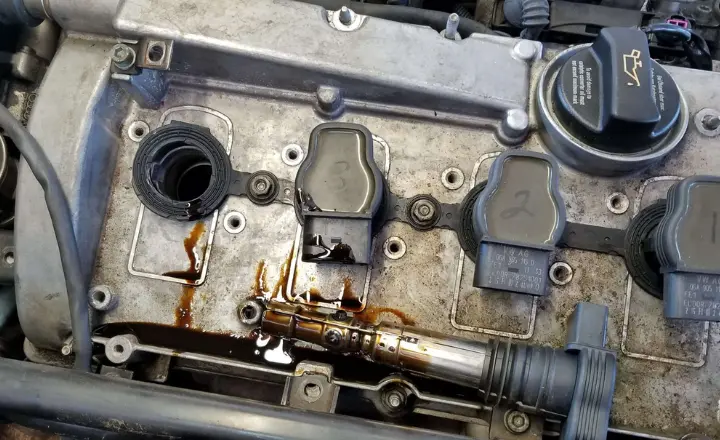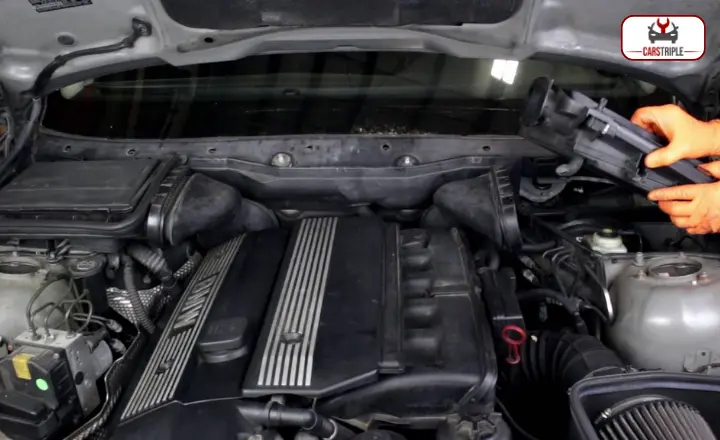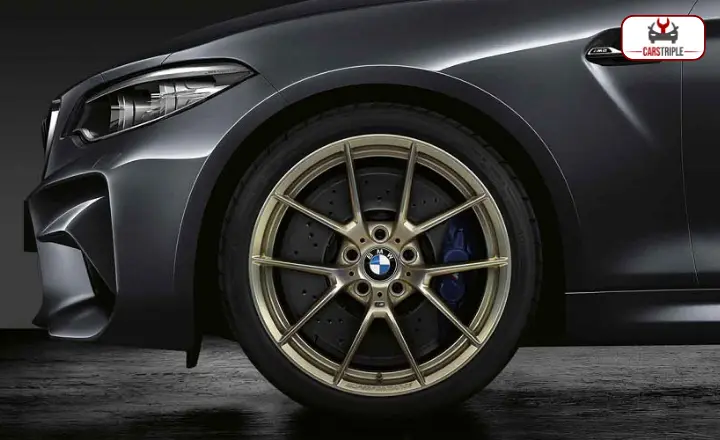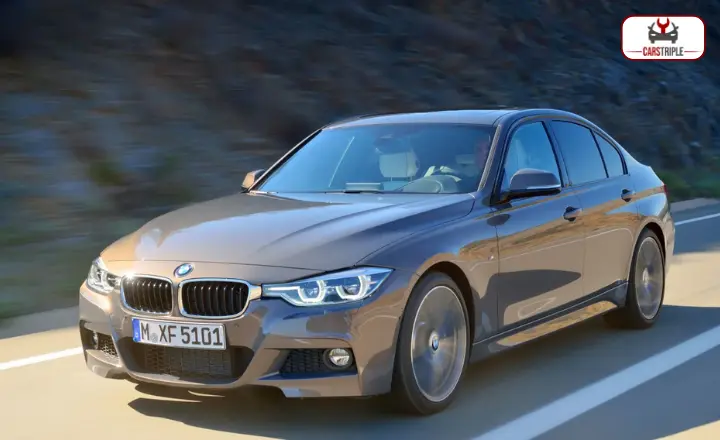For many BMW 3 Series owners, this dream can sometimes become a nightmare when faced with common issues that can damage their driving experience.
Whether it’s electrical glitches or mechanical hiccups, these obstacles often pop up unexpectedly and leave owners scratching their heads in frustration.
From faulty electronics to hidden structural issues, this article will reveal the BMW 3 series most common problems to check before buying anything.
5 BMW 3 Series Most common problems for all
Here are five common issues for all BMW 3 Series!
1. Oil leaks from worn-out engine seals or gaskets
One of the most common problems BMW 3 Series owners face is oil leaks caused by worn-out engine seals or gaskets. While this issue may seem small, it can quickly escalate and lead to significant engine damage if not addressed promptly.
BMW 3 Series owners must closely monitor any signs of oil leakage, such as puddles under the car or a burning smell when driving. It’s also crucial to regularly check the engine seals and gaskets for wear and tear.

Oil leaks when oil changes or only other reasons can cause a messy garage floor and jeopardize your beloved BMW’s overall performance and lifespan. To prevent or mitigate this problem, it is advisable to have regular maintenance checks performed at authorized service centers.
This will ensure that any potential issues with engine seals or gaskets are identified early on and fixed before they escalate into more severe problems.
2. Rough shifts on automatic gearboxes
Some owners have experienced rough shifts on the automatic gearboxes, a problem that can be pretty frustrating. Debris can accumulate in the fluid or clog the filter, affecting the smooth operation of the gears.
Regular maintenance and fluid flushes are crucial to prevent such problems. This pack controls the flow of transmission fluid through valves to engage different gears.
If one or more solenoids fail or become worn out, it can lead to jerky shifts or slipping between gears. Replacing the solenoid pack might solve this issue and restore smooth shifting.
3. Worn boot or hood struts
These struts hold up the boot lid and hood, providing stability while you access these compartments. The struts can weaken or lose effectiveness, resulting in difficulty opening or closing the boot or hood.
This issue is inconvenient and can pose a safety hazard if the boot lid or hood slams shut unexpectedly. Struggling with a heavy boot or hood can be frustrating and cumbersome. It is essential to address worn boots or hood struts as soon as you notice any signs of trouble.

To avoid these problems, regular inspections and maintenance are essential. Check your BMW’s boot and hood regularly for smooth operation and signs of wear on the struts.
If you notice any issues, it’s best to replace them promptly to prevent further damage and ensure your safety on the road.
4. Clogged water drains in the engine bay
These drains channel water away from critical components, such as the battery and electrical systems, to prevent damage. Debris, like leaves and dirt, can accumulate and block these drains, causing water to pool in the engine bay.
This problem may seem insignificant initially, but it can lead to significant issues if addressed. The standing water can corrode metal components and cause electrical malfunctions. You might experience problems with your car’s starting system or even face mysterious electrical glitches.
It is essential to regularly check and clean the water drains in your BMW 3 Series. Use compressed air or a wire brush to remove any obstructions. Ensure you park your car away from areas prone to falling foliage or where dirt accumulates. Paying attention to these details could save you from significant repair costs.
5. Corrosion on the alloy wheels
Corrosion on the alloy wheels is one of the most common problems that BMW 3 Series owners face. This issue typically occurs over time and can be quite an eyesore for those who pride themselves on maintaining their luxury vehicle’s pristine appearance.
While BMWs are known for their exceptional engineering and performance, this problem is plaguing many owners, regardless of model year or trim level.

The corrosion starts in small patches on the BMW car wheels and gradually spreads if not addressed promptly. This can be frustrating for car enthusiasts who take great care in washing and waxing their vehicles regularly.
The unsightly rust patches can diminish the car’s overall beauty, leaving owners disappointed and compelled to seek a solution.
Most Common BMW 3 Series Problems (Per Generation)
Some problems are specific to a particular BMW 3 Series. Let’s look at the most common BMW 3 Series problems for each generation:
BMW 3 Series G20/G21 (2019 – onwards)
Many owners have complained about glitches, freezing screens, and unresponsive controls. This can be frustrating for drivers who rely on these features for navigation and entertainment during their journeys.
BMW may have overlooked software bugs or compatibility issues when designing this new generation of the popular sedan.
Another recurring issue in the G20 G21 models is related to engine performance. Some owners have noticed a lack of power, rough idling, or stalling while driving.
This has raised concerns about the overall reliability of these vehicles and whether BMW has sacrificed quality control for improved fuel efficiency or other features.
Here are the most common problems in the BMW 3 Series G20/G21
- The Electric Passenger Side Mirror Fails To Operate
- A Rattling Exhaust On Cold Startups
BMW 3 Series F30/F31/F34 (2012 – 2019)
The BMW 3 Series has long been hailed as the ultimate executive sedan, but even this iconic model is not immune to its fair share of problems.
Several recurring issues have plagued owners for the F30, F31, and F34 generations spanning from 2012 to 2019. One primary concern is the fuel pump failure that many drivers have reported.
This problem often leads to stalling or difficulty starting the engine, creating an inconvenient and potentially dangerous situation on the road.

Another common headache for BMW 3 Series owners in this generation is related to the electrical system. Numerous reports of faulty electronics, such as malfunctioning sensors, glitches in the infotainment system, and intermittent failures, have surfaced.
These issues can frustrate owners who expect reliable performance from their premium vehicles.
There have been improvements in build quality compared to earlier generations of the BMW 3 Series. With tighter panel gaps and less interior rattling, this iteration offers a more solid driving experience overall.
Let’s check out its common problems!
- Worn Timing Chain Mechanism
- Failed Thermostat Or Water Pump
- Loose Tail Lights Of The Trunk Lid
- Rust On The Front Seat Rail Frames
BMW 3 Series E90/E91/E92/E93 (2005 – 2012)
The BMW 3 Series E90 E91 E92 E93, produced from 2005 to 2012, is considered by many to be a classic in the BMW lineup. Like any car model, it has its fair share of problems that owners should be aware of.
One common issue with this generation is the water pump failure. Many owners have reported coolant leaks and overheating due to faulty water pumps. This can lead to engine damage if not addressed promptly.
Another problem with the E90, E91, E92, and E93 series is the electronic gremlins that seem to plague these cars, from malfunctioning sensors causing warning lights to stay on to endless electrical issues.
Owners need to have a trusted mechanic who knows their way around BMWs. The cost of repairs for these electrical problems can quickly add up, so being prepared financially is crucial.
Like every car, it has some common issues:
- Rust On The Rear Subframe And Wheel Arches
- Failed Or Stuck Cup Holders In The Interior
- The Door Grab Handles In The Interior Get Sticky
- ABS Errors Due To Rusted ABS Rings
- Prematurely-Failed Rear Shocks
Conclusion
You will get the answer to the BMW 3 series most common problems, by staying knowledgeable about these issues and seeking professional assistance when needed.
BMW 3 Series owners can ensure a long-lasting and enjoyable driving experience. It has its fair share of common problems. These problems can sometimes be frustrating and costly, from electrical issues to engine malfunctions.
Despite these challenges, many BMW owners continue to appreciate the performance and luxury that the 3 Series offers. Potential buyers and current owners must know these common problems to make informed decisions and adequately maintain their vehicles.
FAQ’s
Are there any brake-related problems commonly seen in the BMW 3 Series?
Some drivers have reported brake squeaking or premature wear on brake pads and rotors in specific versions of the BMW 3 Series.
Are there known problems with the BMW 3 Series’ electronic systems?
Electronic glitches such as malfunctioning sensors and display screens are commonly reported.
Are there any recurring problems with the interior components of the BMW 3 Series?
Interior trim pieces and controls may show signs of premature wear and degradation over time.
